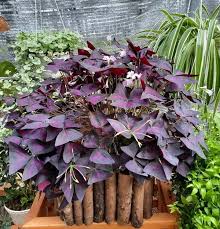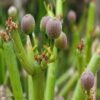Spring Cuisine: Bánh Trôi Tàu

Spring is a season celebrated for its renewal, vibrant colors, and the promise of fresh beginnings. The crisp air and blooming flowers create the perfect setting for seasonal dishes that symbolize life’s rejuvenation and the joy of new growth. One such dish that holds a special place in Vietnamese culture during the spring season is Bánh Trôi Tàu — a traditional sweet dumpling that not only delights the taste buds but also carries rich cultural and symbolic meanings. This dish, known for its smooth texture and aromatic filling, has been a part of Vietnamese culinary heritage for generations, particularly during the Lunar New Year and other springtime festivals.
The Origins and Cultural Significance of Bánh Trôi Tàu
Bánh Trôi Tàu, often referred to as Bánh Trôi, is a type of sticky rice dumpling filled with a sweet and savory center, typically made from mung beans, black sesame, or even sugar. It is commonly served in a warm, aromatic syrup made from ginger and pandan leaves. While this dessert is enjoyed year-round, it holds a deeper significance during the Lunar New Year and festivals that mark the arrival of spring in Vietnam.
The origins of Bánh Trôi Tàu are deeply intertwined with Vietnamese folk traditions and beliefs. The round shape of the dumpling symbolizes the moon, which represents the cyclical nature of time and the universe. The dumplings are a reminder of the eternal cycles of life, death, and rebirth — themes that are especially poignant during the spring season when nature itself is reborn.
Traditionally, Bánh Trôi Tàu is seen as a symbol of prosperity and unity. It is often prepared and enjoyed by families during the Lunar New Year festival as a way to mark the coming of a new season and to invoke good fortune. The dish’s ingredients, including sweet fillings and aromatic flavors, are believed to bring sweetness and harmony into the lives of those who consume it.
Ingredients and Preparation: A Delicate Balance of Flavors
To truly appreciate Bánh Trôi Tàu, it is important to understand the key ingredients that make up this iconic Vietnamese dish. The base of the dumplings is made from glutinous rice flour, which gives them a chewy and slightly sticky texture. This is mixed with warm water to form a smooth dough that is both pliable and resilient — perfect for encasing a variety of fillings.
Fillings
The filling is one of the most important aspects of Bánh Trôi Tàu and can vary depending on the region, family tradition, and personal preference. The most common fillings include:
- Mung Bean Paste: A smooth, slightly sweet paste made from steamed and mashed mung beans, often mixed with sugar and sometimes coconut milk. This filling is creamy and delicate, providing a pleasant contrast to the chewy rice flour wrapper.
- Black Sesame Paste: A richer, nuttier filling made from toasted black sesame seeds, sugar, and sometimes a hint of coconut or peanut oil. This filling offers a deeper flavor profile, with a slightly bitter edge that complements the sweetness of the syrup.
- Sugar and Ground Peanuts: Some variations of Bánh Trôi Tàu use a filling of crushed peanuts mixed with sugar, offering a crunchy texture that contrasts nicely with the smooth, soft exterior of the dumpling.
The Syrup
The dumplings are typically served in a sweet and fragrant syrup made from ginger, sugar, and pandan leaves. The syrup is not only delicious but also has medicinal properties, as ginger is known for its ability to aid digestion and soothe the stomach. The pandan leaves infuse the syrup with a unique, aromatic flavor that complements the sweetness of the dumplings.
How to Make Bánh Trôi Tàu: A Step-by-Step Guide
Making Bánh Trôi Tàu requires patience and attention to detail, but the end result is well worth the effort. Here’s a step-by-step guide on how to prepare this beloved dish:
Ingredients for the Dumplings:
- 300g glutinous rice flour
- 100g mung beans (or black sesame seeds for variation)
- 200g sugar (adjust to taste)
- A pinch of salt
- Water (for dough consistency)
- Pandan leaves (optional, for fragrance)
- Crushed peanuts (optional, for filling)
Ingredients for the Syrup:
- 500ml water
- 200g sugar
- 2-3 slices of ginger (peeled and smashed)
- Pandan leaves (optional)
Instructions:
- Prepare the Filling:
- For mung bean filling: Soak mung beans overnight, then steam them until soft. Mash the mung beans and mix with sugar to create a smooth paste. Set aside.
- For black sesame filling: Toast black sesame seeds in a dry pan until fragrant, then grind them into a paste and mix with sugar.
- For peanut filling: Crush peanuts and mix with sugar for a crunchy filling.
- Make the Dough:
- In a large mixing bowl, combine the glutinous rice flour with a pinch of salt. Gradually add water to form a smooth, soft dough. The dough should be elastic but not too sticky.
- Shape the Dumplings:
- Take a small portion of dough and flatten it into a small disc. Place a spoonful of the filling in the center and fold the dough over it, pinching the edges to seal the dumpling. Roll it into a smooth ball.
- Cook the Dumplings:
- Bring a large pot of water to a boil. Gently drop the dumplings into the boiling water and cook until they float to the surface, which usually takes about 10-15 minutes. Remove from the water and set aside.
- Prepare the Syrup:
- In a separate pot, combine water, sugar, and ginger slices. Bring to a boil, then simmer for 10-15 minutes to infuse the flavors. Add pandan leaves if desired for extra fragrance.
- Serve:
- Once the dumplings are cooked, place them in bowls and pour the warm ginger syrup over them. Serve hot, garnished with a few more pandan leaves if desired.
The Symbolism of Bánh Trôi Tàu in Vietnamese Culture
In Vietnamese culture, food is not merely sustenance — it is a reflection of history, tradition, and the deeper meanings of life. The act of preparing and sharing Bánh Trôi Tàu during the spring festivals is a way for families to come together and celebrate life’s abundance. The round shape of the dumplings reflects the unity of the family, while the sweet and savory fillings represent the balance of life’s pleasures and challenges.
The ginger syrup, often associated with warmth and healing, is a metaphor for the warmth of family and community, providing comfort and care during the cooler days of spring. The dish serves as a reminder to appreciate the simple joys of life, to be grateful for the people around us, and to embrace the changing seasons.
Modern Variations and Innovations
While traditional Bánh Trôi Tàu remains a staple of Vietnamese cuisine, modern twists on the dish have emerged in recent years. Some chefs have experimented with different fillings, such as coconut, durian, or even chocolate, to cater to diverse tastes. Others have made the dish vegan-friendly by using plant-based ingredients in the dough and syrup.
Additionally, the dish has been adapted for international audiences, with many Vietnamese restaurants around the world offering Bánh Trôi Tàu as a way to showcase authentic Vietnamese flavors and cultural traditions.
Conclusion: A Taste of Spring
Bánh Trôi Tàu is more than just a dessert; it is a symbol of the vibrant energy and the sweet beginnings of the spring season. Whether enjoyed as part of a family gathering or as a personal treat, this dish embodies the essence of renewal, unity, and the beauty of life’s cyclical nature. As spring approaches, Bánh Trôi Tàu invites us to celebrate the simple pleasures of food, family, and tradition, making it an essential part of Vietnam’s culinary heritage.

